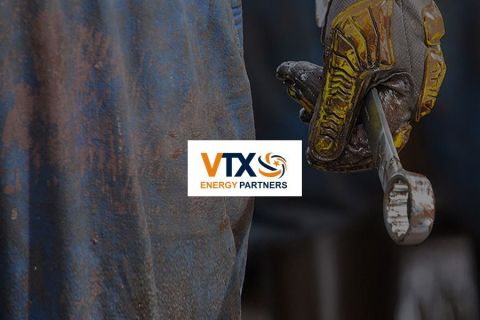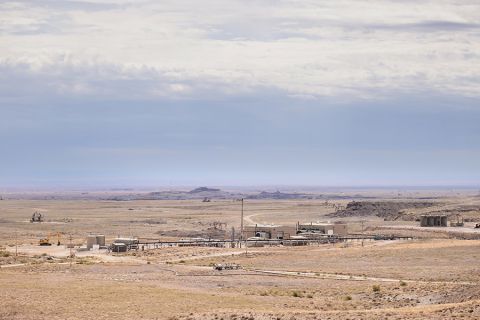
The Leviathan development aims to reach first gas by year-end 2019. (Source: Shutterstock.com)
Noble Energy and partners are barreling toward first gas by year-end 2019 for the gigantic Leviathan development in the Eastern Mediterranean offshore Israel, having doled out more than 150 major contracts after the $3.75 billion project was sanctioned in 2017.
The Houston-based company is working to move from sanction to first gas within 34 months, which is challenging but manageable thanks to the company’s project execution experience, according to Brian Hogan, the Leviathan project manager for Noble Energy. Key enablers include having a development plan with a minimal onshore footprint, a proven execution model and highly reliable conventional technology—all contributing toward achieving first gas by the end of 2019.
There were vendor-related challenges, driven by the 2014 market downturn that led to high staff turnover and reduced staff levels for not only contractors but also subcontractors, Hogan said while speaking during a gathering of the Society of Petroleum Engineers Gulf Coast Section in Houston.
Everything appears to be coming together for Leviathan, which is operated by Noble Energy with partners Delek Drilling and Ratio Oil. Noble has overcome challenges by relying on proven technology and execution models, pulling plays from its nearby Tamar Field, where Hogan said uptime is nearly 100%, and Mari-B.
If Noble is going to move at a fast pace, the company wants to implement what it has a proven track record doing, according to Hogan, who added that led Noble to develop the field as a tieback to a fixed structure platform. “The reality is we’ve done it twice” before in Israel, he said.
Also key in meeting challenges was early engagement with stakeholders and jumping in to assist contractors and subcontractors in resolving issues, increasing execution efficiency, identifying opportunities and driving safety programs. “At the end of the day if we’re going to be successful, they have to be successful,” Hogan said.
Noble Energy is considered a mainstay for Israel, considering the company is known for firsts there and in other parts of the Eastern Mediterranean. The company’s portfolio also includes assets in prolific U.S. shale basins, the U.S. Gulf of Mexico and West Africa.
Work Progresses
“What really separates Leviathan from any other project around the world? It’s an opportunity to change a region,” Hogan said. “You’re bringing an affordable, reliable and clean source of energy to a region that doesn’t always have access to it or it’s intermittent or it’s not reliable.”
Hogan explained how 2017 was all about awarding contracts, finishing engineering work and moving through the permitting process.
Tasks ahead for this year include installing pipelines for the project in the Levant Basin.
“Big activity on the host side will be floating all the decks by the middle of the year. At the end of the year a big milestone for the host is the jacket actually sailing,” Hogan said. “We’re going to split the installation of the jacket and the topsides.”
Plans are for 2019 work to include subsea umbilicals, risers and flowlines installation as well as manifolds and jumpers, precommissioning work, topside hookup and wrapping up any incomplete onshore commissioning work to hit first gas as scheduled.
So far, two of the four wells have been drilled for Phase 1 of the project. The remaining two, along with completion of all four wells, will be finished this year, Hogan said. Once complete, plans are for the wells to be flow tested.
The company said that each subsea well is capable of flowing more than 300 MMscf/d of gas. It will be delivered via two 117-km (73-mile) flowlines to a fixed platform. From there, Noble said processed gas will travel via pipeline to tie in to the national gas grid to be distributed throughout the Israeli domestic market for electricity generation and industrial uses. Natural gas from Leviathan will also be exported to regional markets.
Meeting Needs
Leviathan is believed to hold 623 Bcm (22 Tcf) of gross recoverable resources. The gas produced will help meet the growing energy needs of Israel and the region.
Israel’s natural gas use is forecast to climb to 12.5 Bcm (441 Bcf) in 2020 and to 18 Bcm (636 Bcf) by 2030, compared to the 5.3 Bcm (187 Bcf) consumed in 2010, according to the Israeli Energy Ministry. Most of the gas will be used for electricity generation and industry. This comes as the state works to transition toward cleaner energy sources like natural gas as well as reducing imports of coal and oil among other goals.
Currently, the Noble Energy-operated Tamar Field—which has 11 Tcfe of gross recoverable resources—is supplying 60% of Israel’s energy needs. During a November 2017 presentation, the company said high natural gas demand is leading to record sales volumes. With an existing capacity of 31 MMcm/d (1.1 Bcf/d) for Tamar, Noble is assessing expansion opportunities for not only Tamar but also Leviathan.
Hogan explained that when Tamar went online in 2013 there were swings in energy demands with peaks in the summer and winter and declines in the spring and fall during the so-called shoulder months.
“Over time not only have those peaks grown to essentially max out our capacity, but those shoulder months have almost grown up to those peaks,” Hogan said, noting Tamar is essentially producing at max rates for most of the year now. “What we’re seeing is not only the growth from the past, we are forecasting that growth for the future. That’s where Leviathan comes into the picture.”
Noble is not alone in the Eastern Mediterranean. Energean Oil & Gas, which in 2016 bought stake in the Noble-discovered Tanin and Karish fields offshore Israel, is working to develop these fields via tiebacks to an FPSO unit. In other parts of the Mediterranean, such as offshore Egypt, Eni’s colossal Zohr Field—which has more than 850 Bcm (30 Tcf) of potential gas in place—started up in December 2017 less than 2.5 years after it was discovered.
Export Potential
Gas export possibilities or plans are in the forecast, especially considering other countries in the region and nearby Europe are experiencing demand growth.
Leviathan has been designed with growth in mind, according to Hogan. The development has the ability to expand beyond 57 MMcm/d (2 Bcf/d), which Hogan said would require resources from four additional wells. “We’d have another line tied back to the platform from the manifold and our regional export module [a gas processing and export compression module] installed on the topsides. That’s effectively what is envisioned at this point.”
The module would export gas to neighboring countries and even outside the region, he added, noting this was worked into the design so that “when we pull the trigger on this we minimize impact to ongoing Leviathan production.”
It’s a delicate balancing act, aiming not to overbuild from the start, when developing to execute the Phase 1 scope. But Noble has done a lot of work to determine what makes sense and what doesn’t, including on the subsea side, to minimize future downtime when working around manifolds to install more flowlines and tiebacks to the platform, for example, he added. Export destinations include Jordan.
“There are a number of other options on the table,” Hogan said, including Europe and Egypt. Even with Zohr up and running, “there’s still a pretty big market over there. They are all on the table right now.”
—Velda Addison
Recommended Reading
US Oil, Gas Rig Count Unchanged this Week
2024-11-01 - The oil and gas rig count held at 585 to Nov. 1. Baker Hughes said that puts the total rig count down 33 rigs, or 5% below this time last year.
E&P Highlights: Oct. 14, 2024
2024-10-14 - Here’s a roundup of the latest E&P headlines, including another delay at one of the largest gas fields in the world and two major contracts in West Africa.
VTX Energy Quickly Ramps to 42,000 bbl/d in Southern Delaware Basin
2024-09-24 - VTX Energy’s founder was previously among the leadership that built and sold an adjacent southern Delaware operator, Brigham Resources, for $2.6 billion.
Darbonne: The Geologic, the Man-made and the Political of Uinta Basin Outcrops
2024-10-01 - The oily western Uinta features layers of sedimentary deposits on view for visitors, mostly uninterrupted by man-made features but having an unseen pall of federal interference.
Now, the Uinta: Drillers are Taking Utah’s Oily Stacked Pay Horizontal, at Last
2024-10-04 - Recently unconstrained by new rail capacity, operators are now putting laterals into the oily, western side of this long-producing basin that comes with little associated gas and little water, making it compete with the Permian Basin.
Comments
Add new comment
This conversation is moderated according to Hart Energy community rules. Please read the rules before joining the discussion. If you’re experiencing any technical problems, please contact our customer care team.





